Fat Cats —
Jen’s post today got me wondering how accurately the perception of Wall Street greed matches the reality. The signs from Occupy Wall Street use generous imagery of pigs, a favorite for illustrating greed and corruption:
Then you get the odd fat joke mixed in.
Of course, cartoonists have been portraying high-power executives as enormously fat pigs since Thomas Nast attacked Boss Tweed for political corruption in the 1870s.

Compare Nast’s portrayal of the corrupt Tweed with any of the OWS political cartoons and you’ll see that not much has changed.
But exactly who are these corporate fat cats who run the institutions that have inspired the rage of a generation for their unparallelled greed and corruption?
As a cross-section, let’s take a look at the top 10 wealthiest banks in the United States, as of March 24, 2011, and their CEOs, shall we?
Bank of America
Brian Moynihan

JPMorgan Chase
Jamie Dimon

HSBC Bank USA
Irene Dorner (fourth from left)

US Bank
Richard Davis (left)

PNC Bank
Jim Rohr

Bank of NY Mellon
Gerald Hassell (right)
TD Bank US Holding
Bharat Masrani

I see one, maybe two, people who would qualify as “fattish” in these pictures, but all in all these are slender people, not fatties. For more examples, you can check out CNN’s list of the 25 highest paid men and women, and see for yourself just how outdated and misguided the current rash of Fat Cat imagery has become.
So please, Occupy Wall Street, political cartoonists, and anyone else who will listen: we are not your symbols of greed and corruption; we do not wish to be lumped in with these selfish, greedy assholes who put personal profit above all else; stop using us to demonize the people you really want to direct your animosity at: selfish, greedy assholes.
Thank you.













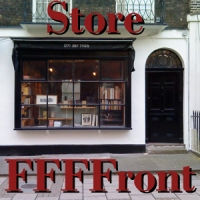
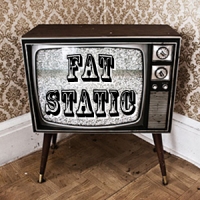
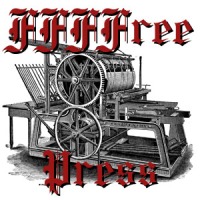

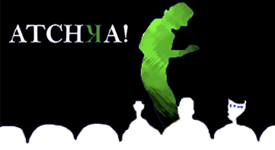

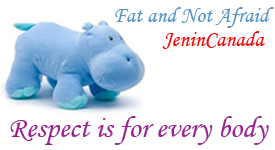

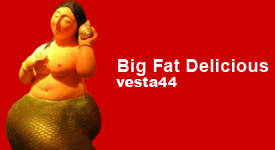
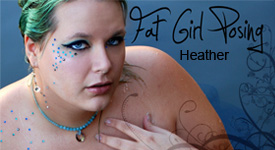










My celebrated wife has insisted for years that fat prejudice is more prevalent on the left than on the right in the States. I’m beginning to consider the possibility that she knows what she’s talking about.
Carl, your wife is celebrated for good reason. Liberals think fatties are evidence of corporate culture run rampant. So, in a way, we’re a symptom of a disease they abhor, so they see as children who need the wise liberals to save us from the corrupt system. As such, their patronizing attitudes toward fatties can be downright sickening.
Peace,
Shannon
Thank you. Wonderful post, atchka, especially with your brilliant and telling inclusion of the photos of these heads of banks. And I agree with Carl Wilkerson’s wife: I seem to encounter more fat-phobia on the left than the right. (But then, perhaps that’s because I spend more time there!) Hmmm.
Thanks Alice. 🙂 I think the right tends to see obesity as a personal choice, which they are more respectful of. The right tends to think that each person gets to choose whatever reckless lifestyle they want, while the left tends to be more paternalistic, wanting to impose restrictions to prevent needless death or injury, which is generally a good thing, except when you make simplistic assumptions about obesity and health.
Peace,
Shannon
Maybe it’s an Aspie thing, but I don’t understand what you’re so upset about. It is the best metaphor for Wall Street corruption; Wall Street is a cancer, and a bloated one, over our country. The only possible other alternative I can think of is some sort of black cloud? I guess I just don’t see these images as fat-phobic; I see them as personifying something that is large, but not necessarily fat. Does that make any sense? I just can’t see any fat hatred there. I see images of pigs or whatever and I think of greed. I don’t think of fat people. Maybe I’m just special, I don’t know.
People think fat people are greedy in general, whether it is with food or with general over-consumption whereas thin people are not. This is an offshoot of the logic that, if you can get fat off of something, you must be rolling in dough. If you have so much and others not enough, then the implication is that the “fat” stole from the “thin.”
Several of these images depict extremely fat people abusing poor thin people. Never once do you see thin people abusing fat people. The implication here is that fat is shorthand for the sin of greed and that they “devour” the less fortunate without mercy. Fat phobia doesn’t get much more explicit than that.
No, it does, actually. Some will even say it: Americans, or at least wealthy Americans, are fat, lazy, greedy, etc. Why include “fat” if fat is not considered some sort of vice?
Anyway, the point wasn’t so much the use of fat as shorthand for vice, problematic though that is. The point was that, even though the ‘fat cat’ resonated at one point, rich people are far more likely to be thin than fat. furthermore, thin is highly prized among rich people and therefore by society in general. So it really should depict thin people abusing fat people in order for these political cartoons to be true to today.
Jenn, the greedy rich are not being called “cancer cats,” nor are they depicted as having cancer. And if they were, we can be sure millions of cancer survivors would be rightfully offended and angry. Also, some of those images show the people, or pigs, eating money.
The belief that greed = fat is based on the belief that fat people are overeaters. This is particularly disturbing because so often, fat people are, in fact, as Jean Antonello calls it, “primary undereaters”: people who undereat (diet/exercise) to lose weight, as prescribed by doctors. This intermittent under-eating in turn causes intermittent over-eating (and less healthy eating: greater cravings for sweets and fats.) This is known as the diet-binge cycle or starve-binge cycle. Undereating causes overeating. Starving causes bingeing. Dieting causes overeating or bingeing. Exercise-dieting (exercising more without eating more, to lose weight) causes overeating or bingeing. (Check out Antonello’s informative articles on this at Antonello’s site, naturallythin.com. I don’t agree with her claims that ending this cycle will necessarily cause weight loss, or that thin is healthier/better, but her insights into weight gain, under-eating, its consequences and how to end it, are very useful.)
Also, greed=fat is not accurate about the wealthy, either, particularly for wealthy women. Thinness, dieting, and anorexic pressures increase with a woman’s wealth. Thin = promotions, wealthy husbands, acceptance into wealthy social circles/networks, etc. On the other hand, larger women are more discriminated against in the workplace and have lower incomes.
We need to replace this old fat = greed, greed = fat stereotype with more accurate perspectives.
I don’t have a suggestion for a simple slogan or image, but greed = lack of caring about others and about the planet. It’s about me vs. them, instead of “all of us on this planet are in this together.”
That doesn’t fit well in a cartoon or protest sign, perhaps, but as activists working toward a more progressive, sustainable future, respectful of all, we must resist the temptation to fall back on imagery/slogans that are inaccurate, hurtful, and harmful (promoting thin = good and virtuous, fat = bad and immoral and selfish, and the pressures to be thin, to diet, and the disordered eating that come with these beliefs) and develop more constructive, accurate messages that support body acceptance and size diversity, while supporting economic fairness and sustainability.
You said it far better than I could have. Thanks!
You’re welcome. 🙂
Peace,
Shannon
CC,
Part of it is my fault. Jen mentioned seeing the “fat cat” caricatures on signs at Nanaimo, and I did a search for Occupy signs featuring fat people. The only overt one I saw was the Chris Christie joke. The political cartoons are different. There, it’s almost universal that Wall Street is portrayed as a giant fat guy, which I think is less ambiguous than the pigs. The pigs aren’t overtly offensive on the surface, but when you look at the frequency with which people equate pigs with fat people (including many political cartoons that merge the two: super-fat personified pigmen), I think it becomes more obvious. Fat people and pigs are synonymous for many people, so I guess I’m just more sensitive to that leap between insinuation and reality.
Peace,
Shannon
Actually, the original association of fat = greed probably goes back to Ben Franklin’s day or so, when it was believed that being of larger size was an indicator of wealth and substance. Men such as Franklin intentionally overate in order to appear larger. Franklin was and still is one of the wealthiest Americans ever, even without adjusting for inflation!
He actually had messages about personal finances useful for all of us in the 99%, about practicing spending restraint even when money is available (saving). He wrote, “The fastest way to earn a penny is to save it.” (The opposite of what economists want to delude us into believing: that people of all incomes, even low and middle income folks, should spend money in order to create jobs. What a farce! We will never get back as much money in job creation and wages as the money we spend.
Everytime we spend, some of what we spend “trickles up” in the form of the highest-paid people in that company skimming some of the money we spend, for every dollar we spend, to put in their own pockets (The CEOs keep some of the profits from everything we buy.) So Franklin is right: to re-balance the economy, people on the lower financial rungs should save as much of our earnings as possible, for our best financial health now and through retirement. We need to stop forking over the money to the wealthy by saving as much as possible.
In reading Leo Tolstoy’s Anna Karenina, many of the aristocracy were depicted by Tolstoy as having portly, robust bodies because they had access to the finest foods. Tolstoy, however, also described these portly aristocrats as healthy. In past times, the poor were often very thin because they were literally starving almost to death. In these times the poor have access to food, at least in first world societies, but the food is often of poor quality. So there are a fair number of poor fat people. I agree that the appropriate image for today’s upper crust would be the toned, tan, buff sort. They have access to gyms and nutritionalists that the underclasses simply do not have.
Excellent points, Alice. And I think there was a time when it was true that the wealthiest people were often fatter because they had better access to foods. In fact, I would bet that the obesity rates of the wealthy at the turn of the 20th century are comparable to our obesity rates today. Obesity was very common among the wealthy, so the analogy and caricature was based on that simple observation. Now, fatties have simply remained the symbols of greed, despite the exact opposite observation between class and weight.
And I had no idea about Ben Franklin being one of the wealthiest without adjusting for inflation. That’s impressive.
Peace,
Shannon
I don’t really see the issue with comparing the “fat cats” to pigs. I’ve you’ve ever fed a group of pigs before, they’re pretty greedy and gluttonous about their food. As in, you do not want to be in the pathway from them to the food, because they’ll knock you down like you weren’t even there.
What I do see issue with is why we compare fat people to pigs. Because fat people in general neither look like, nor act like, pigs.
Kala,
I was drawing the same conclusion you mentioned. Pigs themselves aren’t offensive, but the association between pigs and fatties is. I just couldn’t find the signs that I was looking for.
Peace,
Shannon